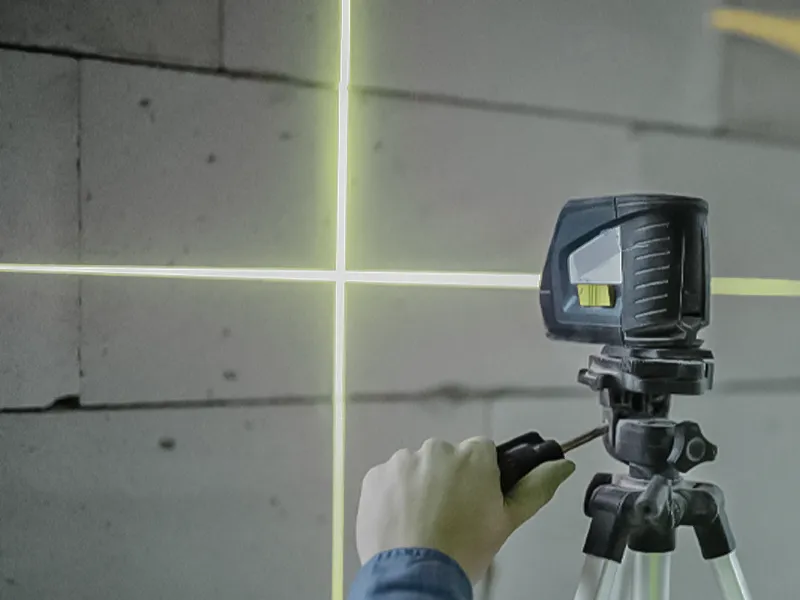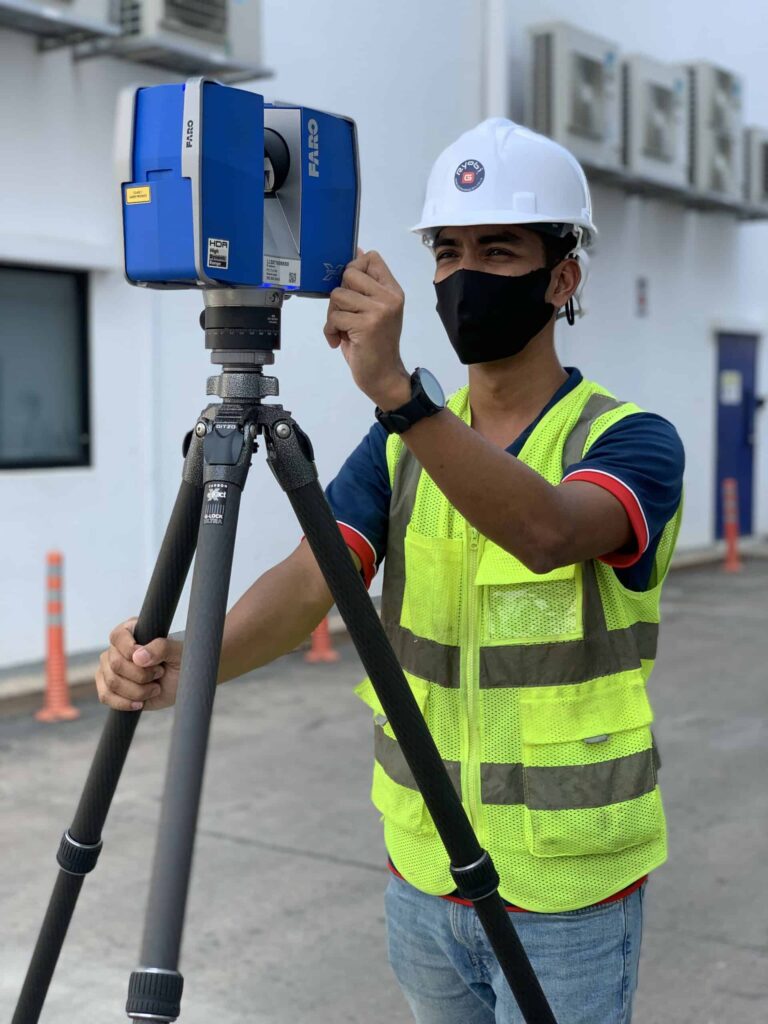Common Questions About 3D Scanning for Architects
Exactly How 3D Laser Scanning Revolutionizes Architectural Style and Building Projects
3D laser scanning is transforming the landscape of building design and construction. This innovation supplies exceptional precision in catching existing atmospheres, which promotes far better task planning and execution. It decreases mistakes while boosting efficiency in various stages of growth. The implications for cooperation among engineers, engineers, and various other stakeholders are considerable. These developments unlock to new style possibilities and ingenious remedies. What lies in advance for this advancing technology?
The Fundamentals of 3D Laser Scanning Technology
Although 3D laser scanning innovation may seem complicated, its core concepts are uncomplicated and transformative for architectural style. This modern technology utilizes laser beams to record accurate measurements of physical frameworks, creating a thorough point cloud that represents the scanned setting. A laser scanner sends out rapid pulses of light, measuring the time it takes for the light to return, which enables for the estimation of distances with impressive accuracy.
The resulting factor cloud can be converted into a 3D model, giving engineers with indispensable aesthetic information. This model makes it possible for professionals to assess and control design components within their projects, enabling cutting-edge services and boosted visualization. By using 3D laser scanning, engineers can much better comprehend the status quo of a website, guaranteeing that new layouts integrate with their surroundings. This integration of modern technology right into architectural style notes a considerable development, promoting imagination and precision in the field.

Enhancing Accuracy and Effectiveness in Architectural Projects
As architectural projects progressively demand precision and speed, 3D laser scanning emerges as a critical device in improving both precision and performance. This innovation catches millions of information factors in a short timeframe, developing specific and in-depth 3D designs of existing frameworks. The ability to get precise dimensions reduces the danger of mistakes during the layout stage, permitting designers to envision their projects with unrivaled clarity.
The quick data collection process reduces the time spent on-site, allowing teams to focus on analysis and layout improvements. With real-time information availability, modifications can be made promptly, advertising an extra structured operations. The integration of 3D laser scanning right into architectural methods not only enhances dimension precision however likewise boosts the general task timeline, assisting in quicker decision-making. In an industry where accuracy is important, this technology stands as a transformative pressure, elevating the requirements of architectural design and building tasks.
Simplifying Collaboration Amongst Stakeholders
While standard architectural procedures usually involve fragmented interaction among stakeholders, 3D laser scanning cultivates an extra cohesive joint setting. By offering accurate, high-resolution data, this technology enables engineers, engineers, clients, and professionals to operate from a unified factor of referral. The in-depth visualizations generated through laser scanning remove misconceptions and ambiguities, making sure that all parties have accessibility to the exact same details.
This transparency enhances decision-making and encourages timely comments, as stakeholders can conveniently imagine layout aspects and spatial partnerships. Additionally, the assimilation of 3D scanning data into Building Info Modeling (BIM) platforms better streamlines cooperation, enabling real-time updates and modifications. Such smooth communication not just reduces conflicts however likewise accelerates project timelines, as all stakeholders continue to be straightened throughout the layout and building and construction stages. Eventually, 3D laser scanning changes conventional process right into a more reliable and joint process, benefiting all events included.
Opening Innovative Possibilities in Design
By allowing designers to picture intricate spatial relationships and complex information, 3D laser scanning exposes creative opportunities in layout. This modern technology permits exact mapping of existing atmospheres, enabling engineers to check out ingenious ideas that could have formerly appeared unwise. With extremely exact information, developers can experiment with unconventional kinds and products, pressing the borders of traditional architecture.
The integration of 3D laser scanning right into the style process fosters collaboration amongst multidisciplinary groups, encouraging the exchange of concepts and enhancing imagination. The in-depth visualizations created by this technology not only help in recognizing prospective design challenges however likewise inspire solutions that might not have actually been taken into consideration. Because of this, engineers this can produce much more dynamic and engaging spaces that reverberate with users while satisfying functional demands. Inevitably, 3D laser scanning transforms the building landscape, equipping designers to realize their visions with unmatched precision and creative thinking.
The Future of 3D Laser Scanning in Architecture and Construction
The assimilation of 3D laser scanning into building layout not only improves imagination yet also sets the phase for its developing role in the future of design and building. As modern technology advances, the accuracy and efficiency of laser scanning will certainly proceed to improve, enabling builders and architects to produce more you could try here intricate designs with accuracy - 3D Scanning. The usage of this innovation in real-time data collection will facilitate better decision-making, minimizing errors and enhancing workflows
Future applications may include digital and enhanced fact combinations, enabling stakeholders to envision jobs in immersive settings. On top of that, as sustainability ends up being a top priority, 3D laser scanning will support the growth of energy-efficient styles by offering in-depth understandings right into existing structures. As cooperation amongst various disciplines ends up being even more crucial, the ability to share precise 3D designs will foster development and boost task end results. Ultimately, 3D laser scanning will redefine requirements in building layout and construction practices.
Frequently Asked Inquiries
What Is the Expense of Carrying Out 3D Laser Scanning Modern Technology?

How much time Does a Typical 3D Laser Scanning Task Take?
A typical 3D laser scanning project can take anywhere from a few hours to a number of days, relying on aspects such as the task's size, intricacy, and the level of detail needed for precise data capture.
What Kinds of Projects Advantage The Majority Of From 3D Laser Scanning?
3D laser scanning advantages various projects, particularly large-scale constructions, historical reconstructions, and complex renovations. It boosts accuracy in dimensions, reduces mistakes, and supplies comprehensive information crucial for reliable planning and implementation in building style and construction.

Are There Particular Software Program Programs Required for 3D Laser Scans?
Yes, particular software program programs are crucial for processing 3D laser scans. 3D Scanning. Popular options consist of Autodesk ReCap, Faro Scene, and Leica Cyclone, each offering one-of-a-kind functions tailored for imagining and examining checked information effectively in numerous jobs
Just How Does 3D Laser Scanning Effect Environmental Sustainability in Building And Construction?
3D laser scanning boosts environmental sustainability in building and construction by lessening material waste, allowing precise dimensions, and promoting efficient source usage. This modern technology permits far better planning, lowering the ecological footprint of building and construction projects with improved precision and effectiveness.
3D laser scanning is transforming the landscape of architectural layout and construction. 3D laser scanning modern technology might appear complicated, its core concepts are transformative and simple for architectural design. By making it possible for designers to envision complicated spatial connections and detailed information, 3D laser scanning exposes imaginative opportunities in design. The assimilation of 3D laser scanning right into the style process promotes cooperation among multidisciplinary groups, urging the exchange of concepts and boosting imagination. The combination of 3D laser scanning into architectural layout not only enhances creativity but also establishes the phase for its advancing duty in the future of Read Full Article design and building and construction.